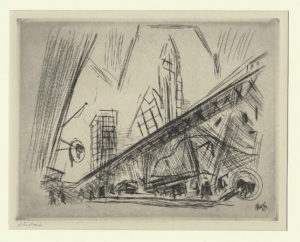In between essays, articles, and reviews, Joseph Epstein writes short stories, 18 of which have been collected in Fabulous Small Jews (Houghton Mifflin). It’s an odd book–odd, that is, if your idea of what a short story should sound like is based solely on the output of those dewy-eyed authors who learned their craft in expensive creative-writing programs.
Epstein, by contrast, is homemade and middle-aged, and for all his undeniable highness of brow, he has taken as his subject matter the lives and loves of a class of people who rarely figure in contemporary American fiction. His stories are set in Chicago and inhabited almost exclusively by Jews–but not just any Jews. As one of his characters explains, “In our neighborhood, politics, modern art, and psychotherapy played no role whatsoever. Fathers were too busy with their work as salesmen, owners of small businesses, or one-man law practices. Their horizons ended with making a good living and being excellent providers. As for their sons, most of the boys I knew in grade school and high school went on to the University of Illinois, where they majored in business; the rest, a small minority, aimed at dental or medical school.” Such are the folk of whom he writes.
If you’re bored already, Fabulous Small Jews might not be for you, but I think you’ll be surprised by how quickly Epstein’s divorce lawyers, upper-middle-class businessmen, and high-school teachers cast their spell. A few bad eggs notwithstanding, most of them are basically decent men whose lives are much more than half over, playing against the clock and trying to make the best of their variously bad situations. Being Jewish, they view the world with a briny blend of humor and disillusion, and he sums them up skillfully and with unsentimental affection.
These tales are the opposite of trendy. Instead, they partake of what might be called the journalistic virtues. Epstein knows how to get a story moving right from the opening bell: “‘Apart from your brother,’ my father used to say, ‘money is your best friend.’ He said it to me early, and he said it more than once.” (Did you notice that the second sentence scans?) His eye for detail is just about infallible: “At the Wasserburgs’ house on the lake, on the North Shore in Glencoe, amid the Matisse, the Motherwells, the Fairfield Porter, and the large Frankenthaler, he approached her.”
Most of all, Joseph Epstein knows the territory, and the people who work it. If you don’t, now’s your chance to pay them a visit. Should you find yourself on or near the Upper West Side of New York tonight, you can do it in person: Epstein will be answering questions and reading from Fabulous Small Jews at 7:30 at the Barnes & Noble at 82nd and Broadway. You buy it, he’ll sign it.
(In case you’re wondering, the title comes from “Hospital,” a poem by the acutely underrated Karl Shapiro: This is the Oxford of all sicknesses./Kings have lain here and fabulous small Jews/And actresses whose legs were always news.)

 I never thought I’d be able to afford a Marin, but this one is a fluke, reprinted in 1924 in a special edition of 500 copies as a premium for New Republic subscribers, meaning that surviving impressions are comparatively easy to find and thus a hell of a lot less expensive. I’ve been trying to imagine a modern-day counterpart of such an offer, without much success. (Perhaps O could offer its subscribers tubes of Vaseline signed by Matthew Barney?)
I never thought I’d be able to afford a Marin, but this one is a fluke, reprinted in 1924 in a special edition of 500 copies as a premium for New Republic subscribers, meaning that surviving impressions are comparatively easy to find and thus a hell of a lot less expensive. I’ve been trying to imagine a modern-day counterpart of such an offer, without much success. (Perhaps O could offer its subscribers tubes of Vaseline signed by Matthew Barney?)